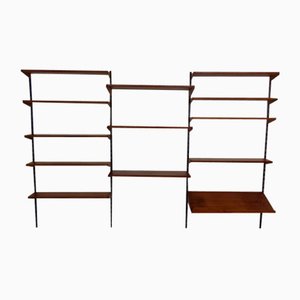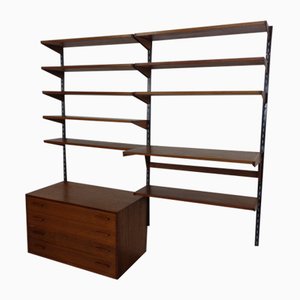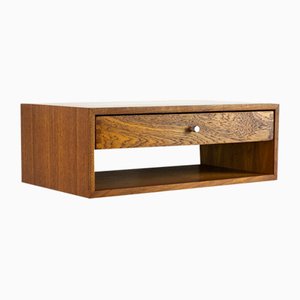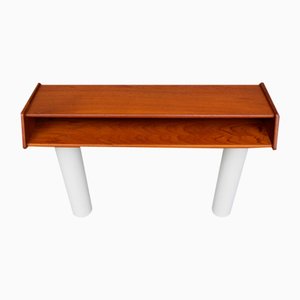
Danish designer Kai Kristiansen was born in 1929. Like many of Denmark's design greats, he apprenticed in cabinetmaking before enrolling—around 1948—in the prestigious Royal Danish Academy of Fine Arts in Copenhagen under the highly influential designer Kaare Klint. At the age of 26, Kristiansen opened his own studio and began to create furniture in what would soon became known as the Danish modern style. His designs would be produced by well-known Danish manufacturers, such as Feldballes Møbelfabrik, Fornem Møbelkunst, Fritz Hansen, and Magnus Olesen.
In true Danish modern fashion, Kristiansen favored well-joined teak and rosewood, evident equally in his chairs, desks, sideboards, and wall units. In 1956, he designed his most celebrated work, the No. 42 Chair for Schou Andersen. The organically curved back and pivoted armrests form a chair that is as beautiful as it is comfortable. The No. 42 was well-received by critics and enjoyed continued success as one of the most enduring Danish designs of the 20th century.
Kristiansen's collaboration with Magnus Olesen brought about the sleek and sculptured No. 121 Lounge Chair. His modular FM Reolsystem Wall Unit (1957) for Feldballe Møbelfabrik met with success, not only in Scandinavia, but also throughout the rest of Europe and overseas in the United States.
Because they were so difficult to manufacture, many of Kristiansen’s designs eventually went out of production. In 2014, Kristiansen collaborated with Miyazaki Chair Company in Japan to reimagine some of his classics designs, which resulted in the Handy Chair, 4110 Chair, and Paper Knife seating collection. Today, his vintage designs are highly collectible, and he is recognized as one of the most talented Scandinavian designers of the 20th century.








